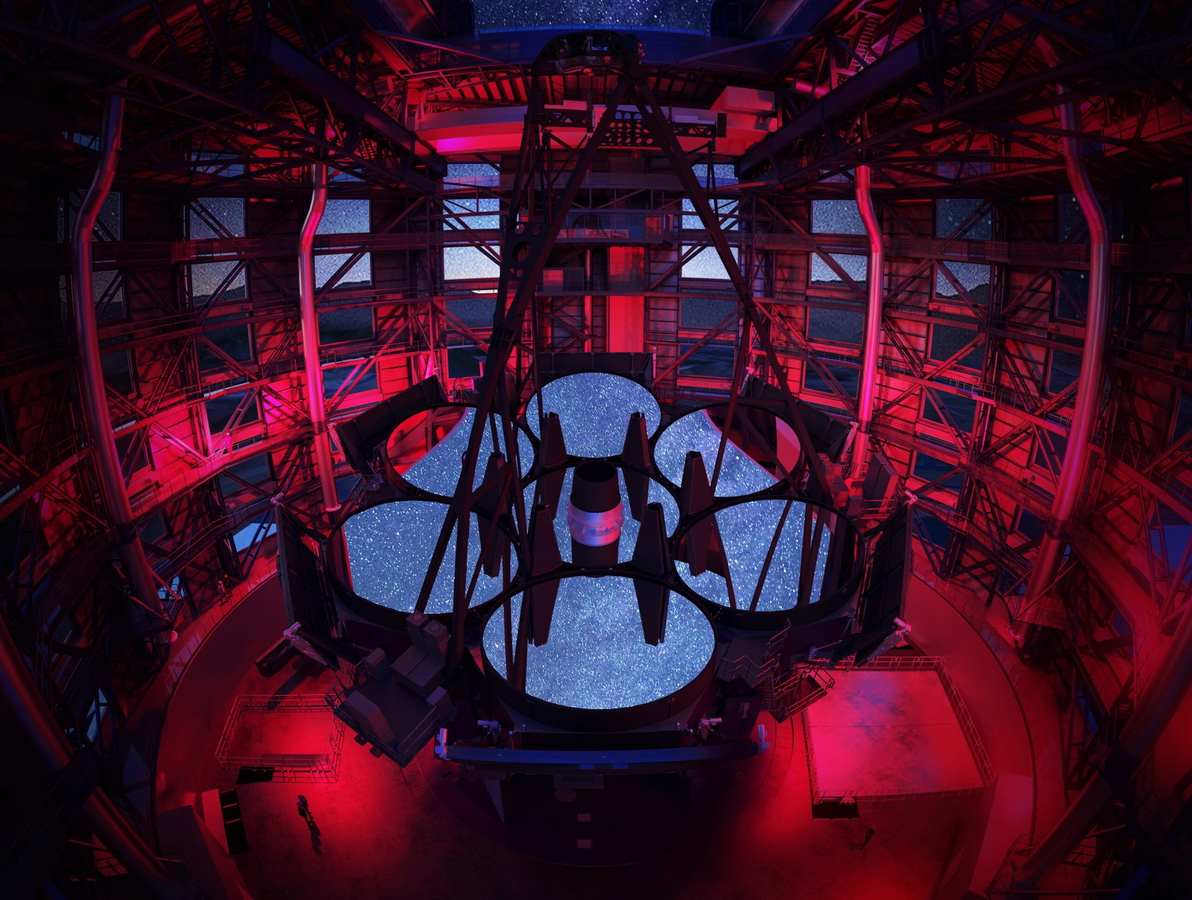Enabling a new era of discovery
The Giant Magellan Telescope (GMT) is one of three next-generation, ground-based telescopes currently under construction. These “Extremely Large Telescopes” are being designed to achieve revolutionary new levels of clarity and sensitivity for studying all astronomical sources — from exoplanets nearby, to the first stars and galaxies that formed in the Universe, to the evolution of the Universe itself.
Of these three telescopes, the GMT is unique in several respects. It will collect light using seven of the largest mirrors ever made and will use cutting-edge technology to combine that light into images as much as 1000 times more sensitive than those from the new James Webb Space Telescope. But collecting the light is just the first step. The GMT design enables it to be paired with a unique suite of spectrographs and cameras that will give astrophysicists the tools to unravel the mysteries of dark matter, dark energy, black holes, and the origin of our universe.
In this talk, you will learn how the GMT is being designed and constructed to achieve these feats, learn about the cutting-edge technology that will enable its performance, and get a glimpse of the universe of scientific discoveries that await.
A Carnegie-led effort recently secured $205 million toward the completion of the next-generation Giant Magellan Telescope, which is currently being built at our Las Campanas Observatory in Chile. When completed, the GMT will enable breakthrough astronomy—from revealing the fundamental physics underpinning the cosmos to advancing our ability to search for life on distant worlds.

Meet Rebecca Bernstein
Bernstein is a Staff Scientist at Carnegie and the Chief Scientist for GMTO, where she plays a leading role in ensuring that the observatory and its instruments will enable scientists from the Founder institutions, including Carnegie, to meet the project’s scientific goals.
Learn more


